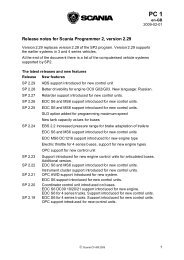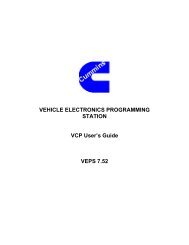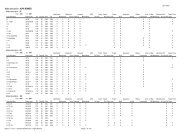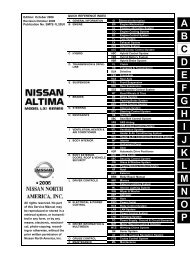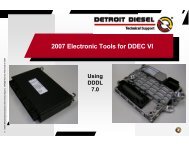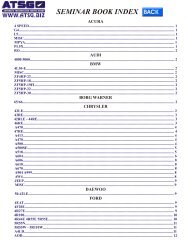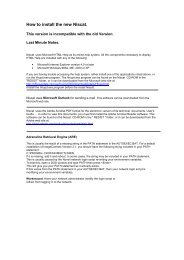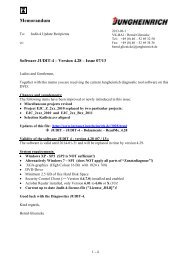Vogele Basic Training Hydraulics & Electrics
Vogele Basic Training Hydraulics & Electrics
Vogele Basic Training Hydraulics & Electrics
Create successful ePaper yourself
Turn your PDF publications into a flip-book with our unique Google optimized e-Paper software.
H.13.0 Annex<br />
H.13.1 Principles of hydraulics<br />
<strong>Hydraulics</strong> is the technology of an alternative gearbox type to that of mechanical, electric or pneumatic gearboxes, i.e. it serves to transfer<br />
power, energy and torque from drive machines (pumps) to working machines (pistons or hydraulic motors), where the performance parameters<br />
are matched to the requirements of the working machine. In hydraulics, the energy is transferred by fluid, usually in the form of a special<br />
mineral oil, but also to an increasing degree in the form of ecologically compatible fluids, such as water, or special-purpose esters or glycols.<br />
The power transferred is yielded by two factors: pressure and fluid flow (volume flow).<br />
The following distinctions must be made:<br />
- Hydrodynamic drives operate with a pump and a drive turbine. The rotational speed and torque are converted via the kinetic energy of the<br />
fluid.<br />
- Viscous couplings transfer energy through the viscous friction between rotating circular plates.<br />
- Hydrostatic drives primarily convert the mechanical energy of the drive machine (electric motor; diesel) into hydraulic power via a pump.<br />
This power is in turn converted back into mechanical power in consumers. This takes place in hydraulic cylinders in a linear movement,<br />
or in hydromotors in a rotary movement. Hydrostatic drives are often the most energy efficient type of gearbox when infinite adjustment of the<br />
drive-side speed is necessary.<br />
Feeding pressurized fluid into the cylinder sets the pistons and piston rods inside the cylinder into linear motion that is utilized for the working<br />
processes and to drive machines. Rotating drives can also be realized with fluid pressure, such as the hydraulic motor.<br />
In principle, hydraulic systems are similar to pneumatic drives, in which compressed air is used to transfer energy and signal, but have different<br />
properties. Oil-operated hydraulic systems always require a closed circuit (supply and return), while the exhaust air of a pneumatic system is<br />
emitted into the environment, usually via a muffler. Only water-based hydraulic systems also require an open circuit. In contrast to pneumatics,<br />
hydraulics has the advantage that significantly greater forces can be transferred and extremely uniform and precise motion is possible, as the<br />
compression of the hydraulic fluid is so slight that it has virtually no negative impact in the case of technical applications.



